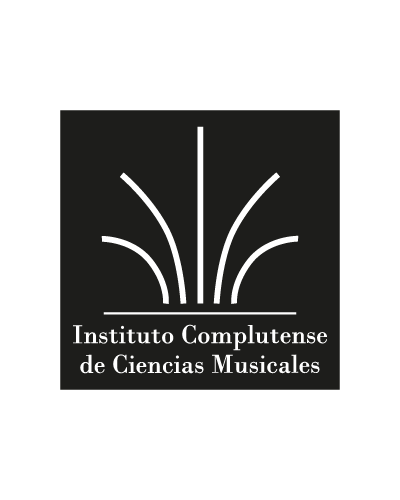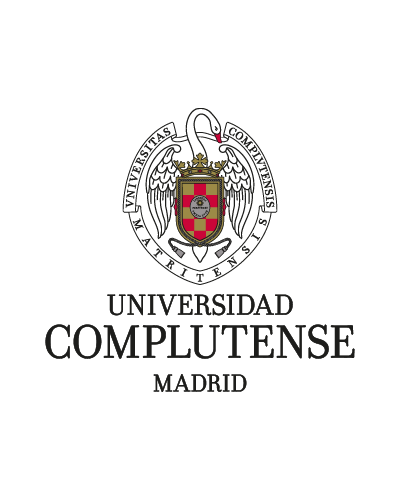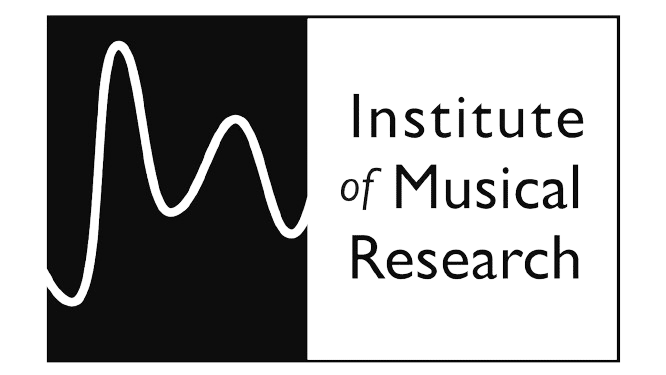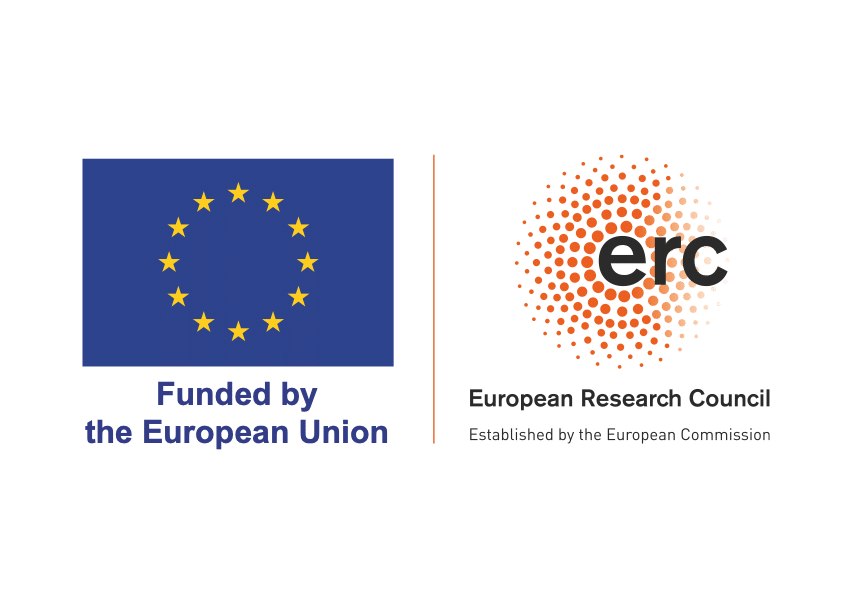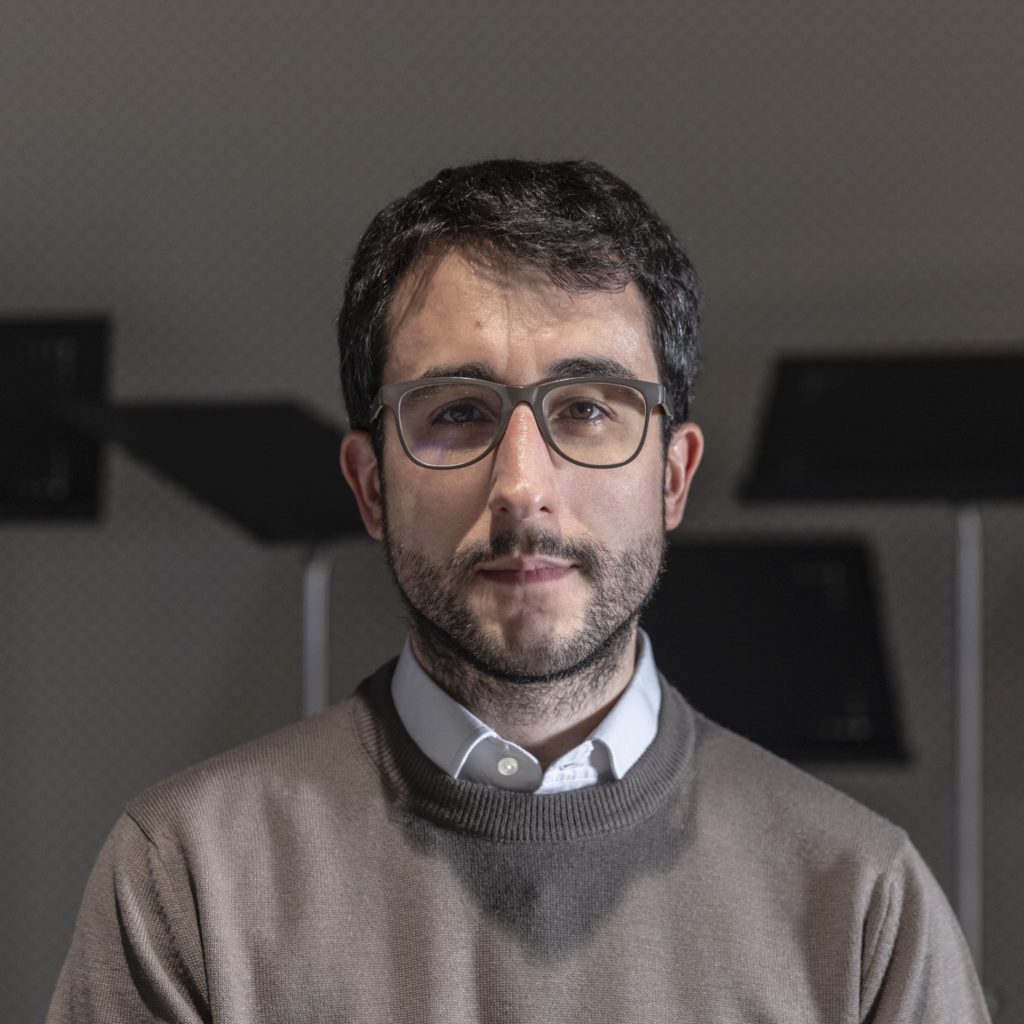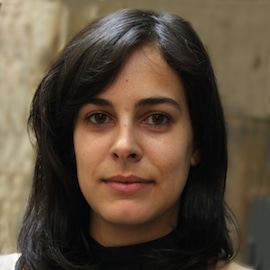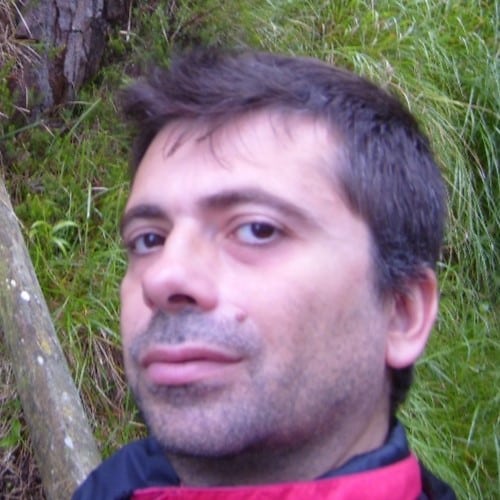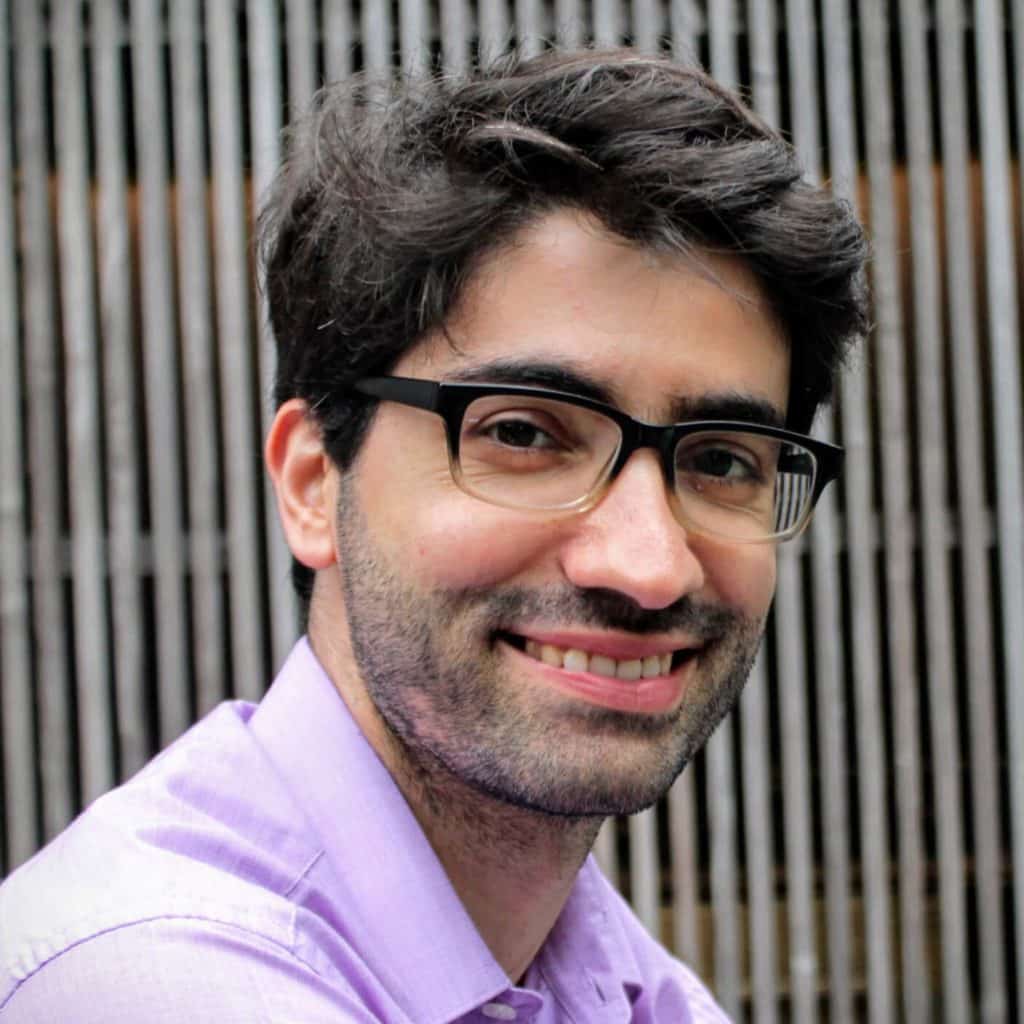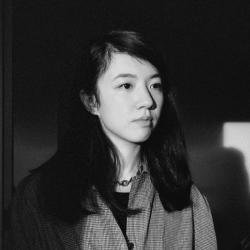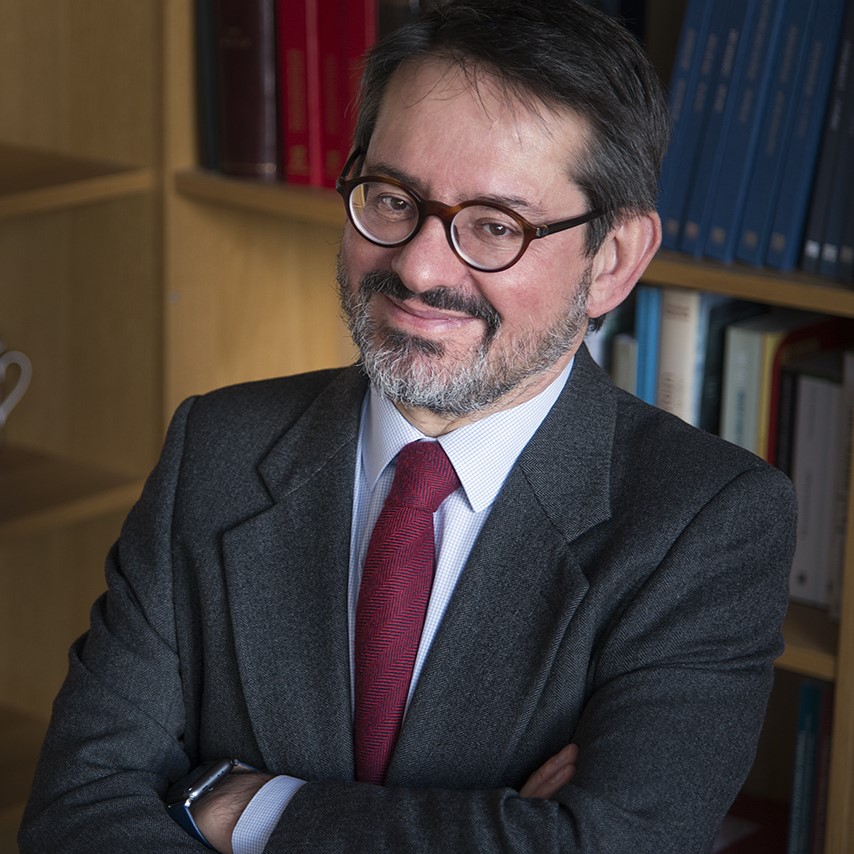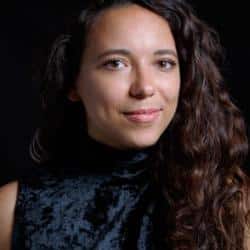Conferences
Intersections: Interdisciplinary Approaches to Opera
27 June 2023 | 8:45–17:00 | University of Cambridge, Faculty of Music, Recital Room
The specificity of contemporary research trends is leading to a necessary yet dangerous compartmentalisation of knowledge. Whereas discussing particular topics in specialised forums is nowadays more accessible and open than ever, fewer opportunities for interdisciplinary debate seem to be coming to light. However, opera – a genre in which music, words, theatre, dance, costumes, and technology have intersected since its origins – requires interdisciplinary approaches in order for it to be more fully understood.
Our study day aims to contribute to this necessary dialogue by bringing together scholars from various disciplines to discuss opera not only in terms of its various components and diachronic developments, but also, and more importantly, through the combination of historical, analytical, textual, performative, object-related, and computer-based approaches.
Programme
Registration and Welcome
Session 1: Wagnerisms
Moderator: Dr. Ana Llorens
09:00–10:00 | Keynote 1: Siegfried’s polychronics: Towards a musical application of animal listening
David Trippett
David Trippett is musicologist and cultural historian. His research focuses on nineteenth-century intellectual history, Richard Wagner, and the philosophy of technology. Other interests include Franz Liszt and post-Classical Weimar, performance theory and the grey area between improvisation and composition, as well as posthumanism and musical creativity in the digital age.
Following an edited translation of Carl Stumpf’s The Origins of Music (OUP, 2012), his first monograph, Wagner’s Melodies (CUP, 2013), examined the cultural and scientific history of melodic theory in relation to Wagner’s writings and music. Other publications include editions and translations, as well as research and review articles, and some media work.
In research and teaching, he approaches music and its cultures in the widest interdisciplinary sense, incorporating perspectives of cultural and intellectual history, music theory and the history of science, and as well as mediality and the philosophy of technology. His latest project, funded by an ERC Starting Grant, is entitled ‘Sound and Materialism in the 19th Century’ and examines how a scientific-materialist conception of sound was formed alongside a dominant culture of romantic idealism. Alongside this, he recently completed a critical edition and an orchestrated performing edition of Franz Liszt’s Italian opera, Sardanapalo. This received its world premiere in August 2018, and a recording was released in 2019 to critical acclaim.
Major prizes for research include the Lewis Lockwood Award and the Alfred Einstein Award of the American Musicological Society, the Bruno Nettl Prize of the Society for Ethnomusicology, the Donald Tovey Memorial Prize of the University of Oxford, a Deems Taylor Award of the American Society for Composers, Authors, and Publishers, and a Philip Leverhulme Prize in History.
Nineteenth-century histories of human-animal aurality have typically centred on questions of animal ‘music’ in which music shores up the identity of being ‘human’ as much as human listening authenticates the value of what music is or should be. With echoes of Giorgio Agamben’s ‘anthropological machine’, being animal became an index for calibrating through sound the higher value of being human (Gautier 2014; Zon 2017; Mundy 2018).
Against this impulse, this talk traces an intersection of natural scientists and music theorists that posed a different kind of question: can animal auralities be calculated, even simulated for human listeners? Attempts by nineteenth-century physiologists Johannes Müller and Karl Ernst von Baer, alongside the Leipzig theorist Moritz Hauptmann, offer case studies in the attempt to understand animal hearing. These took the form of thought experiments, quantified in space and time. In this paper, I revisit these experiments in relation to Richard Wagner’s famous depiction of animal-human communication in Siegfried where the phenomena of polychronic listening and drug use, as mechanisms for altered perceptual realities, becomes recontextualised within nineteenth-century comparative anatomy and its debates over animal aurality.
This raises the question of whether a shared epistemic outlook between music theorists and natural scientists could ever elide depictions of listening, between the symbolic and the mimetic, and the extent to which contemporary listeners witnessing such depictions on stage might be considered agents of a Foucauldian ‘unity of discourse’, i.e. within the terms of a shared intellectual history for music and science.
10:00–10:20 | Wagner’s traumatic undoing: Interdisciplinarity through the lens of Wagner’s motifs
Tristan Harkcom
Tristan Harcom is in the final stages of completing his PhD at the Open University, where he was funded through the AHRC’s CHASE DTP. His dissertation, ‘Wagnerian wounds: Trauma and Wagner’s post-1849 works’, supervised by Dr Robert Samuels and Dr Ben Winters, investigates Richard Wagner’s traumatic experience of revolution in 1849 and its echoes in Wagner’s artworks. During his PhD he was awarded the Research Students’ Bursary of the Dresden Trust to undertake archival work in Dresden and the audience prize at the Wagner Society’s Young Lecturer Competition for his lecture ‘“Remembrances and forebodings”: Traumatic memory in the life and works of Richard Wagner’. Previously, his master’s research, supervised by Dr Mark Berry, focused on the semiotics of anti-Semitism in Wagner’s Der Ring des Nibelungen.
In May 1849, Dresden was plunged into a brutal week-long conflict between pro-democracy rebels and the authoritarian government. Houses were demolished, buildings were flecked with bullet holes, and the old opera house was left as a burnt-out shell. Active among the revolutionary party was the composer Richard Wagner, who fled, pursued by an arrest warrant, when government forces retook the city. Wagner’s experience of the revolution had a traumatic effect on him, but it was also the source of new creative inspiration. In the wake of this experience, Wagner embarked on a programme of theoretical writing in which he attempted to recast the genre of opera in interdisciplinary terms. This new Gesamtkunstwerk—total or unified artwork—would ‘gather up each branch of art to use it as a mean, and in some sense to undo it for the common aim of all’. Central to this new artform was Wagner’s conception of ‘motifs’, a musical-poetic device with the power to express meaning and to recall or forebode past and future action in the drama. In this presentation, I will explore the ways in which Wagner’s interdisciplinary whole undoes its constituent parts, and I will draw parallels between this artistic conception of interdisciplinarity and the interdisciplinary analytical tools that I devised during my PhD in order to analyse Wagner’s motifs as the musical expression of his traumatic experience.
10:20–10:40 | An intersection between neo-Riemannian analysis and topic theory: Wagnerian mystery in Conrado del Campo’s El final de don Álvaro (1910–1911)
David Ferreiro
David Ferreiro gained his PhD in Musicology at Complutense University of Madrid (2019). He also holds a Master’s Degree in Spanish and Hispano-American Music in the same university (2015). For the realisation of his doctorate he enjoyed a four-year contract for the Training of University Teachers funded by Spain’s Ministry of Education (FPU), which allowed him to devote full time to his dissertation about the first two operas of Conrado del Campo; as well as to complete two three-month stays at Yale University as Visiting Assistant in Research (2017 and 2018). His lines of research focus around Spanish music and musicians of the 19th and 20th centuries, with special attention to the following areas: analysis and music theory, nationalism, regionalism, and musical identity in Galicia, edition and recovery of the repertoire, Spanish lyrical theatre, associationism, musical institutions, and wind bands. He won the National Prize of Musicology for the most outstanding dissertation (2020), awarded by the Spanish Musicological Society.
During the first fifteen years of the 20th century Madrid was living the last peak in the reception of Wagner’s music. In this sense, the successful premiere of Tristan und Isolde in 1911 asserted the pressure to implement Wagnerian elements to create the Spanish national opera. Therefore, Wagnerism—a lyric style known by composers and the specialised audiences of the time—was assumed to be the best global language for elaborating an attractive operatic idiom that, together with the Spanish folklore, would play well on the international stage.
This paper studies the first opera of Conrado del Campo (1878–1953)—El final de don Álvaro (1910–1911)—, which epitomises the height of using Wagnerian elements in Spanish opera. He was, together with Manuel de Falla, one of the most important composers of the time, not only because of the quality of his output, but also due to his pedagogical influence. In addition, he absorbed many of the best features of the Wagnerian idiom but, at the same time, avoided the excesses that mar many other Wagner-influenced works. Namely, I demonstrate how Del Campo uses the Neo-Riemannian harmonic concept ‘Hexatonic pole’—very prominent within Wagner’s mid-late lyric dramas—to build and transmit the uncanny within his first opera.
First, I start with the technical and hermeneutical definition of the ‘Hexatonic pole’. Second, I show how this element is used throughout El final de don Álvaro, not only in terms of harmony, but also within the structural and melodic levels. Finally, I apply topic theory to prove that the ‘hexatonic pole’ must be considered a musical topic that, in this concrete cultural context, is a Wagnerian influence that evokes the mystery; and, at the same time, whose meaning is understood both by the composer and the audience of the Teatro Real of Madrid.
10:40–10:50 | Discussion
Coffee break
Session 2: Opera and other genres
Moderator: Prof. Iain Fenlon
11:05–11:25 | Carmen in silent film music. Uses and abuses of Bizet’s opera as a representation of Spanish identity during Hollywood’s Golden Age
Lidia López
Lidia López is a Lecturer at the Musicology Department at the Autonomous University of Barcelona (UAB), where she achieved her PhD in 2014. Her primary research fields include audiovisual analysis, film music, and music in video games. She has published widely in high-ranked publishers such as Routledge, Peter Lang, and Waxmann Verlag. She has participated as a guest speaker in several national and international conferences, co-directed the III Sound Transit International Conference (Mataró, 2019), and is a member of the MUSC-UAB Research Group (Music in Contemporary Societies), the SSIT Research Group (Tecnocampus, Pompeu Fabra), and the Executive Committee of the SSSMG [Society for the Study of Sound and Music in Games]. She is currently editing a volume on Popular Music in Spanish Cinema, which will be published in Ashgate Popular and Folk Music Series in 2023, and has signed a contract with Palgrave for a book titled Music, Sound, and Identity in Video Games.
During the late 1910s and 1920s (years known as Hollywood’s Golden Age), musicians who worked in theatres accompanying silent films had a wide range of possibilities to put music into films. The cue sheets, photoplay music compilations, or encyclopaedias with musical recommendations were the most used resources. In this context, the opera Carmen was one of the preferred scores as music for the image, particularly, when the film’s plot was located in Spain, or it represented the exoticism of the Hispanic world. Since its inception, Bizet’s opera pictured Spanish culture as dangerous, sensual, and exotic, resulting very attractive for the North American audience, where the music publishers began to sell arrangements and transcriptions of the main arias of the opera with commercial success.
This paper studies the uses of the opera Carmen in silent cinema throughout the first decades of the 20th century, analysing in which films, situations, and characters its music was proposed. To this end, I worked with a selection of Spanish-themed motion pictures and cue sheets provided by the Film Study Center of the George Eastman House (Rochester, NY). Furthermore, I deepen into the aesthetics of the scores tagged as ‘Spanish music’ of Rapee’sEncyclopaedia and a selection of photoplay music compilations, where the original compositions are so stylistically similar to the prior opera that it is only possible to consider them as plagiarism.
11:25–11:45 | From ‘vizio privato’ to ‘pubblica virtù’: Parallels between the novelle and the drammi per musica by Maiolino Bisaccioni
Carlo Bosi
Carlo Bosi gained his DPhil at the University of Oxford (2004) with a dissertation on modality in the songs of Du Fay and Binchois. In 2004–2005 he was DAAD scholar at the Friedrich-Schiller-Universität Jena-Weimar and in 2006–2007 he received a scholarship of the Norges Forskningsråd at the NTNU Trondheim with a project on chant in medieval Scandinavia. He was Research Fellow at City University, London between 2007 and 2009. From 2010 until 2017 he was postdoc and a senior postdoc on two FWF (Austrian Science Fund) projects on the borrowing and citation of monophonic tunes in polyphonic textures (https://chansonmelodies-sbg-ac.eu). Since 2019 he is senior postdoc in a research project exploring the relationship of libertine literature and libretti in early Venetian opera (https://operaincogniti.org/). He is now preparing a research project on Antonio Caldara’s operas for Salzburg.
Much better known for his political pamphlets than for his purely literary production, the Ferrarese-born Maiolino Bisaccioni (1582–1663) was at one time secretary of the Venetian Accademia degli Incogniti, founded by Gian Francesco Loredan (1607–1661) in 1630. To the collection of the Cento Novelle amorose dei Signori Accademici Incogniti (1651), which he himself edited, Bisaccioni contributed with six novelle. These he later republished in an anthology of his own subdivided into four books (1637–1664), which comprised 68 tales in total. Even by the copious standards of his times Bisaccioni’s personal contribution to the genre is remarkable. Less well known is his activity as a librettist. Of these he authored three: L’Ercole in Lidia (Teatro Novissimo, 1645), with music by Giovanni Rovetta; La Semiramide in India(Teatro SS. Giovanni e Paolo, 1648), set to music by Francesco Sacrati, and L’Orithia (Teatro SS. Apostoli, 1650), music composed by Gasparo Sartorio. In addition, he wrote the Cannocchiale per la Finta pazza (Venice, 1641), which, beyond its evident promotional aim, also provided a pretext for political and moral considerations on one of the most successful operas of those decades. In this paper I propose an investigation of the relationships between libretti and some novelle in Bisaccioni’s oeuvre, analysing possible common narrative strategies and the migration from one genre to the other of fictional situations and/or stock dramatic sequences and materials, highlighting at the same time the subtle emergence of political considerations matured in the author’s several historiographical works.
11:45–11:55 | Discussion
Session 3: Embodiments
Moderator: Prof. Álvaro Torrente
11:55–12:15 | The diva is present: Some thoughts on Marina Abramović’s 7 Deaths of Maria Callas (2020)
João Pedro Cachopo
João Pedro Cachopo teaches Philosophy of Music at the NOVA University Lisbon. He is a member of the CESEM – Centre for the Study of the Sociology and Aesthetics of Music, where he coordinates the Critical Theory and Communication Research Group. His interests include the intersection of aesthetics, politics, and technology, the interplay between the arts, and issues of performance, dramaturgy, and remediation. He is the author of The Digital Pandemic: Imagination in Times of Isolation (Bloomsbury, 2022), originally published as A Torção dos Sentidos: Pandemia e Remediação Digital in Portugal (Documenta, 2020) and Brazil (Elefante 2021), and the co-editor of Rancière and Music (Edinburgh University Press, 2020), among other books. His work has also appeared in international journals such as The Opera Quarterly, New German Critique, Telos: Critical Theory of the Contemporary, Critique and Sound Stage Screen, as well as in collective volumes, such as The Routledge Companion of Music and Modern Literature.
Almost half a century after the death of Maria Callas, the myth of the singer still persists. In fact, looking at recent years, it seems to intensify. Books, documentaries, exhibitions, shows, and tributes continue to proliferate. Furthermore, unprecedented projects emerge, in which the use of new media takes the lead: an immersive exhibition, a concert with a hologram, a posthumous duet between Callas and Gheorghiu. It is against this background that I address 7 Deaths of Maria Callas (2020), an operatic project by Marina Abramović, with music by Marko Nikodijević and video by Nabil Elderkin.
Crossing different arts and media, the show re-enacts, between the stage and the screen, the deaths of seven female characters from seven famous operas: Verdi’s La traviata, Puccini’s Tosca, Verdi’s Otello, Puccini’s Madama Butterfly, Bizet’s Carmen, Donizetti’s Lucia di Lammermmor, and Bellini’s Norma. A different singer performs each of these arias live while a video is projected on a giant screen at the back of the stage. There are therefore seven videos in which Marina, either alone or co-starring with Willem Dafoe, embodies seven deaths under the sign of ‘consumption’, ‘jumping’, ‘strangulation’, ‘Hara-Kiri’, ‘knifing’, ‘madness’, and ‘burning’. An eighth death is added to these seven: the death of Maria Callas. It is in this eighth scene, which reproduces the circumstances of the soprano’s death in her Parisian apartment in 1977, that Marina Abramović, embodying Callas, intervenes as a performance artist on stage.
My purpose in this paper is twofold. On the one hand, I aim to discuss some of the themes evoked by this project: the tensions between the performing arts and performance art; the interpretative challenges of intermediality and intertextuality; the trope of the female protagonist’s death in opera. On the other hand, taking as a starting point the emphasis on the artist’s presence on stage—a crucial aspect of Abramović’s work—I seek to show how 7 Deaths of Maria Callas embodies and manifests the paradox that runs through many of the recent projects around Maria Callas: on the one hand, the fascination with the multiplication of images, doubles, copies, avatars, media; on the other hand, the obsession with the values of originality: authenticity, liveness, and presence.
12:15–12:35 | Virtuosic without organs? Singing voice synthesis and virtuality in Shibuya Keīchirō’s The End (2012)
Jessica Tsun Lem Hui
Jessica Tsun Lem Hui is a composer and PhD researcher in Music at Christ’s College, University of Cambridge. Her research examines contemporary relationships between voice, technology, and society. Her dissertation investigates the cultural histories and impact of vocal imitation technologies, ranging from 18th-century speaking automata to contemporary AI-generated voices.
In Shibuya Keīchirō’s ‘humanless’ opera, The End (2012), desires for pliability and fantasies of control are realised through the technological affordances of Vocaloid. This singing synthesis software manifests the voices of both the protagonist (virtual pop sensation Hatsune Miku) and the antagonist (a bootleg clone known as Look-A-Like) in an opera of holographic bodies and virtual mise-en-scène. The End’s narrative obsesses over death and existentialism, where Miku attempts to defy her immortal, digital state for a fallible, human existence—an ultimately humanist rendering of a posthumanist opera illustrating the fluidity and fragility of nonhuman performers and the diegetic world. By examining the opera’s narrative, notions of vocal virtuosity, and by exploring the socio-technical assemblage of Miku, this paper reimagines vocal production and intermundane collaboration as it relates to the fluid and reversible configurations between voices, bodies, and technologies in performance. It proposes a reading of musical performance that troubles both the experience of the performing voice and narratives of technological determinism relating to emerging voice technologies.
11:55–13:05 | The serpent, the bombardon, and the tuba: Nineteenth-century low brass opera orchestra instrumentation and performance practice then and now
Jack Adler-McKean
Jack Adler-McKean is a performer-researcher promoting the tuba family through collaborations with internationally renowned ensembles, composers, and academic institutions. Recent projects include performances with Ensemble Modern and Klangforum Wien, music theatre productions on stage at the Deutsche Oper Berlin and Philharmonie Luxembourg, collaborations on new solo works with Sarah Nemstov and George Lewis, premières at the BBC Proms and Darmstädter Ferienkurse, and recitals in Rome and Buenos Aires. Recent research activities include presentations at conferences in Paris and Klagenfurt, working with tuba students in Ankara and Jihlava, and giving seminars for composers in London and Boston. His first book, The Playing Techniques of the Tuba, was published by Bärenreiter in 2020; other writings have been featured in the Historic Brass Society Journal and Oxford Handbook of Wind Instruments, while he also curates the Contemporary Music for Tuba collection for Edition Gravis, and his own compositions and arrangements are published by Potenza Music. He was recently awarded his PhD from the Royal Northern College of Music, supported by the Arts and Humanities Research Council of Great Britain.
By the early 19th century, the serpent—a rudimentary mediaeval instrument designed to support plainchant in French church choirs—was being pushed ever further out of its comfort zone by composers attempting to strengthen their lower wind sections. To aid with chromatic pitch production, instrument manufacturers began to experiment with keys, and, following patenting in 1814, with various types of valve. The invention of the Baß-Tuba in 1835 and saxhorn in 1842 is broadly seen as the culmination of this developmental process; however, such instruments were created exclusively for use in bands. These inventions acquired wide popularity at great speed, but the aesthetic desires of composers and the practice traditions of performers did not align overnight. To this day, a tubist is unlikely to be aware of which lower-brass instrument a nineteenth-century composer had in mind for their music, or indeed which instrument was used for the première.
The most profound effect of such a lack of tuba-composer relationships is perhaps felt with regard to 19th-century operatic performance practices. Contemporary tubas are designed to resonate with maximum amplitude at similar formant shapes to the human voice, thus forcing vocalists to project with ever greater volume and resonance. This paper investigates the lower brass instruments for which 19th-century composers may have written and/or had at their disposal in their operatic works, demonstrated through recordings on early instruments in comparison with those used today, focussing in particular on the music of Giuseppe Verdi and Richard Wagner. Through this combination of historical, organological, and practice-based methodologies, I am to show how significant an impact the employment of particular instruments can have on performance of this repertoire, as well as suggesting more generally one manner in which the so-called ‘material turn’ and ‘practice turn’ in recent music research fields can develop mutually symbiotic relationships.
12:55–13:05 | Discussion
Lunch break
Session 4: Digital encounters
Moderator: Prof. David Trippett
14:00–15:00 | Keynote 2: The Didone Project. Between musicology, music theory, and data science
Ana Llorens
Ana Llorens holds a PhD in Music from the University of Cambridge. She is Lecturer in Music Theory and Analysis at the Universidad Complutense de Madrid and the scientific director of the ERC ‘DIDONE’ project. She is specialised in the analysis of large corpora and, since 2019, board member of the Spanish Society of Musicology. Currently, she is Principal Investigator of the project ‘The Sound of Pau Casals’, funded by Spain’s Ministry of Science and Innovation, as well as co-editor of the volume The Cambridge Companion to Music in Spain (CUP, to appear). Her work has been published in Music Theory Online, Empirical Musicology Review, Routledge, and Brepols.
Álvaro Torrente
Álvaro Torrente is Professor in Musicology at the Universidad Complutense de Madrid and Head of the Instituto Complutense de Ciencias Musicales. He is the principal investigator of the ERC ‘DIDONE’ project. His research focuses on the sacred villancico and Italian opera from the 17th and 18th centuries. He is associate editor of The Operas of Francesco Cavalli (Bärenreiter), and his editions have been performed in Munich, London, and Amsterdam.
In this keynote lecture we present the main objectives and tasks of the research project ‘DIDONE: The Sources of Absolute Music’, Funded with an Advanced Grant from the European Research Council. We discuss the diverse disciplines that converge in it, from musical edition to music and statistical analysis. In this regard teamwork is particularly relevant, as it converts DIDONE into a true musicological laboratory. More specifically, firstly we focus on our method to emotionally label the corpus of digital scores that we are building on five drammi per musica on texts by Pietro Metastasio. Secondly, we explore the theoretical relation between the emotions, as expressed in the aria texts, and the composers’ use of specific keys throughout the 18th century. To that, aim we have compiled a dataset with more than 10,000 pieces, which are analysed computationally at the intersection between musicology, music theory, and statistics. Ultimately, we suggest that extra-musical, production-related factors were more critical than the emotions themselves in this respect. Similarly, we l show how a given emotion was set to music in varying, sometimes opposing, ways and, conversely, how dissimilar passions received similar compositional treatment.
15:00–15:20 | Rehearsing ecosystem: Becoming plastic tree
Lea Luka Sikau
Lea Luka Sikau works at the nexus of experimental music theatre, artistic research, and media incubation. Awarded with the Bavarian Cultural Award and a Fellowship for Harvard University’s Mellon School for Performance and Theater Research, she currently pursues a PhD in Music on Rehearsals of New Opera and Posthumanism at the University of Cambridge. Besides, Lea Luka Sikau has worked with some of the most sought-after visionaries such as Romeo Castellucci, Rimini Protokoll, and Marina Abramović.
Sivan Eldar and Cordelia Lynn’s new opera Like Flesh (2022) tells a story of queer ecology: A woman in their sixties falls in love with a female student and, through their kiss, the former transforms into a tree. With the intention to queer opera out, Eldar and Lynn write an opera that delves deeply into the love relationship of a tree and a human. While the mycorrhizal communication manner of trees challenges the student, she entangles herself in the tree’s trunk. The opera explores the friction between more-than-human entanglement and its impediments.
This paper reflects on the mycorrhizal structure of opera’s creation via rehearsal ethnography. I zoom into the workshop sessions and the main rehearsal phase in Lille, by investigating the development of Like Flesh in collaboration with the computer music centre Ircam.
Tracing trajectories of the sound composition, the mise-en-scène, and the rendering of imagery generated from neural networks, Like Flesh demonstrates a case of how eco-themed narrations are materialised within contemporary operatic practice. These frameworks of production are set out to build new worlds of sonic and scenic visuality, whilst cutting into the material world they originate from.
15:20–15:40 | Opera lovers as fans: Analysing fan communities in the digital age
Nicolò Palazzetti
Nicolò Palazzetti is a postdoctoral researcher at La Sapienza University of Rome. His current project, funded by a Marie Skłodowska-Curie Fellowship (2022–2024), investigates opera fandom in the digital age. Prior to join La Sapienza, Nicolò was a Postdoctoral Research Fellow at the University of Strasbourg and a Teaching Fellow at the University of Birmingham. He completed his PhD in 2017 at the École des Hautes Études en Sciences Sociales, Paris. Nicolò has written several peer-reviewed articles and book chapters on 20th-century music and theatre, music, and politics, as well as on opera fandom (Journal of Modern Italian Studies, The Opera Quarterly, International Review of the Aesthetics and Sociology of Music, Rivista Italiana di Musicologia). His first monograph, Bela Bartók in Italy. The Politics of Myth-Making, was published by The Boydell Press in 2021.
Opera lovers are often portrayed as ‘obsessive and maniacal’ (Alberto Mattioli). Despite such clichés, musicologists have largely overlooked fans. While a history of opera fandom is missing, fan practices are constantly evolving. Recent scholarship has addressed the digital diffusion of opera; moreover, digital fan communities are now well known in popular music studies, sound studies and theatre studies. Opera (cyber-)fandom, however, is largely under-researched.
This paper analyses today’s opera fandom through a qualitative and comparative methodology combining digital ethnography with on-site participant observation at opera houses (such as the Teatro alla Scala in Milan and the Metropolitan Opera in New York). In this paper, I also investigate the extensive background literature available in fan studies about different fan communities (from sport to social tv, from comics to cars). Concepts and methods developed within the field of fan studies may significantly enrich the sociological analysis, as proved by Daniel Cavicchi’s research on 19h-century music lovers (2011) and Claudio Benzecry’s ethnography on Teatro Colón’s aficionados (2011). Fan scholars have extensively looked at the dynamics of fan-based cultures and their engagement with media. Henry Jenkins’s now classic analysis of fandom (Textual Poachers, 1992), for instance, examines how fans re-create and ‘poach’ media products. Fans develop distinctive patterns of social interaction and new cultural productions emerge from the community’s shared passion. Internet has reinforced fan communities, helping networked fandom in promoting certain sub-cultures.
In a period in which the COVID-19 pandemic is challenging our conceptions of live performance, the study of opera fandom is pivotal to reconsider the legacy of a centuries-old practice and looks at its possible futures.
14:40–14:50 | Discussion
Short break
Response: Against interdisciplinarity
Stefano Castelvecchi
Stefano Castelvecchi works at the University of Cambridge, where he is Associate Professor in the Faculty of Music and a Fellow of St John’s College.
He is the author of the book Sentimental Opera: Questions of Genre in the Age of Bourgeois Drama (Cambridge University Press, 2013) and the editor and co-translator of Abramo Basevi’s The Operas of Giuseppe Verdi of 1859 (University of Chicago Press, 2013). He has published critical editions of works by Rossini and Verdi, and a number of articles on 18th- and 19th-century opera.
He has held visiting professorships at Vassar College (NY), the University of Chicago, and the University of Pavia-Cremona.
Castelvecchi has frequently engaged with the broader, non-academic public through talks and programme essays for such institutions as the Royal Opera House Covent Garden (London), Teatro alla Scala (Milan), Teatro La Fenice (Venice), Teatro Real (Madrid), Glyndebourne Festival, the Royal Festival Hall at the South Bank, the Rossini Opera Festival (Pesaro), BBC Radio 3 and Radio 4 (and their Italian equivalent, RAI Radio 3), and the British Library, and liner notes for record companies such as Deutsche Grammophon and Stradivari.
He studied composition at the Conservatorio Santa Cecilia (Rome), holds a laurea in humanities from the University of Rome I – La Sapienza (where the supervisor of his music-history dissertation was Pierluigi Petrobelli), and a PhD in Music from the University of Chicago (supervised by Philip Gossett).
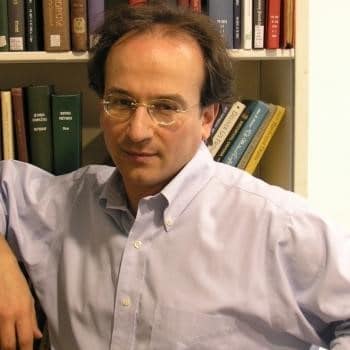
Advisory Committee

Dr. Stefano Castelvecchi
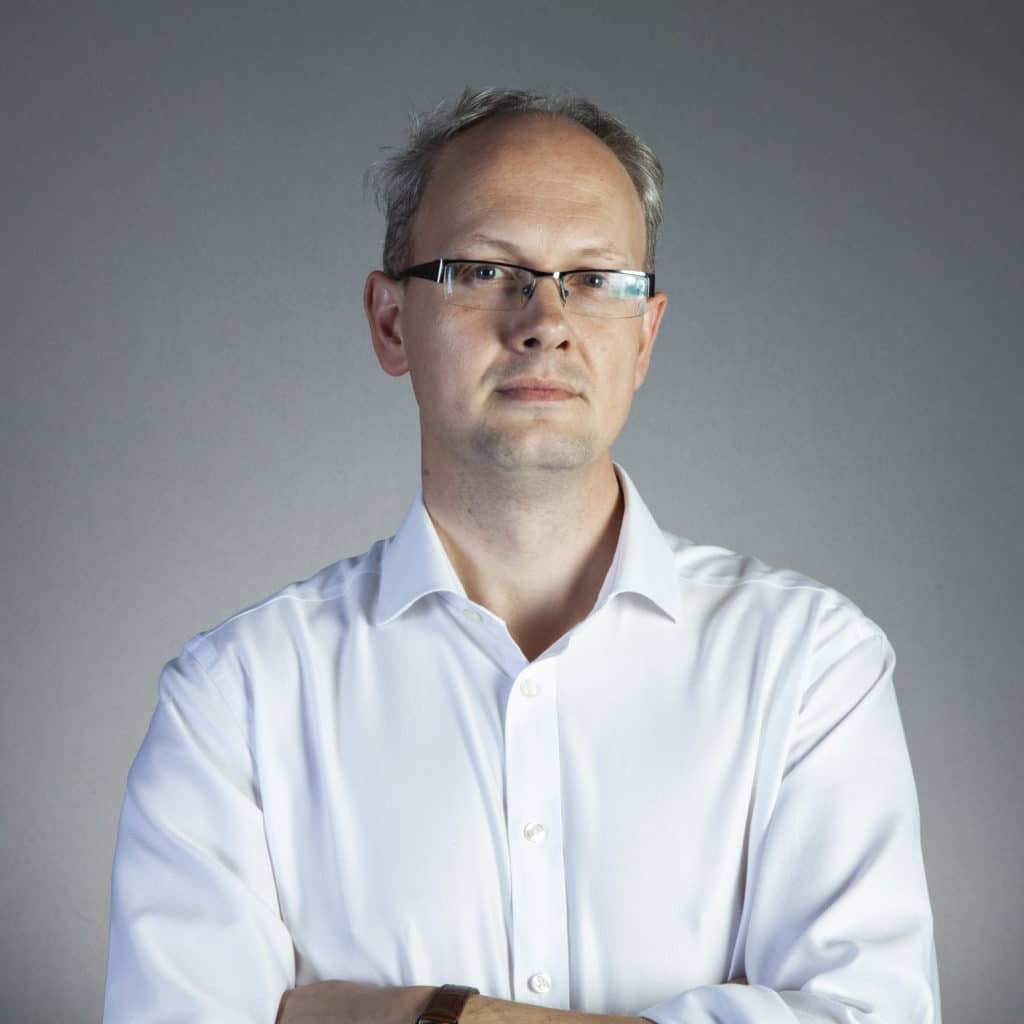
Prof. David Trippett
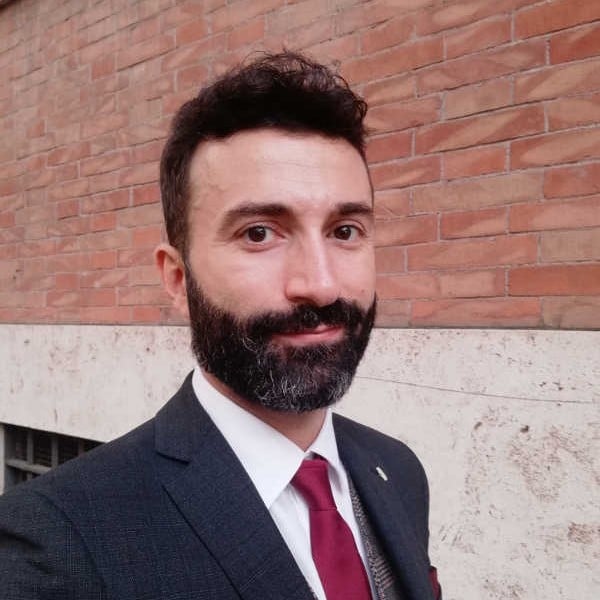
Dr. Nicola Usula
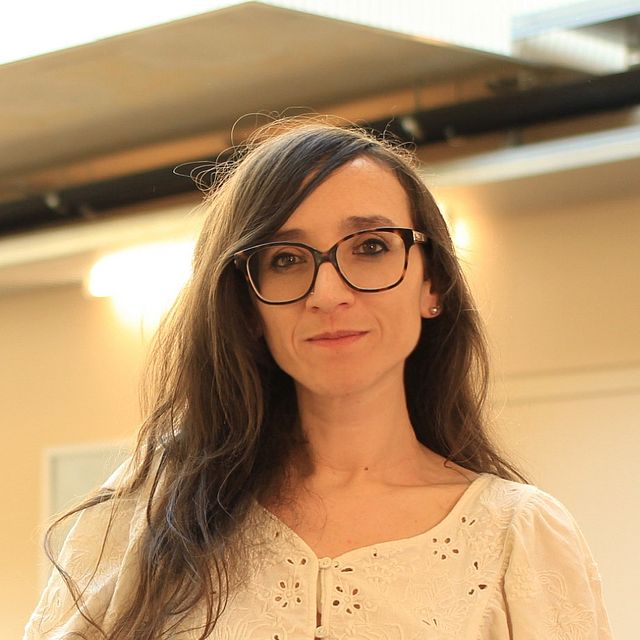
Dr. Emilia Parada-Cabaleiro
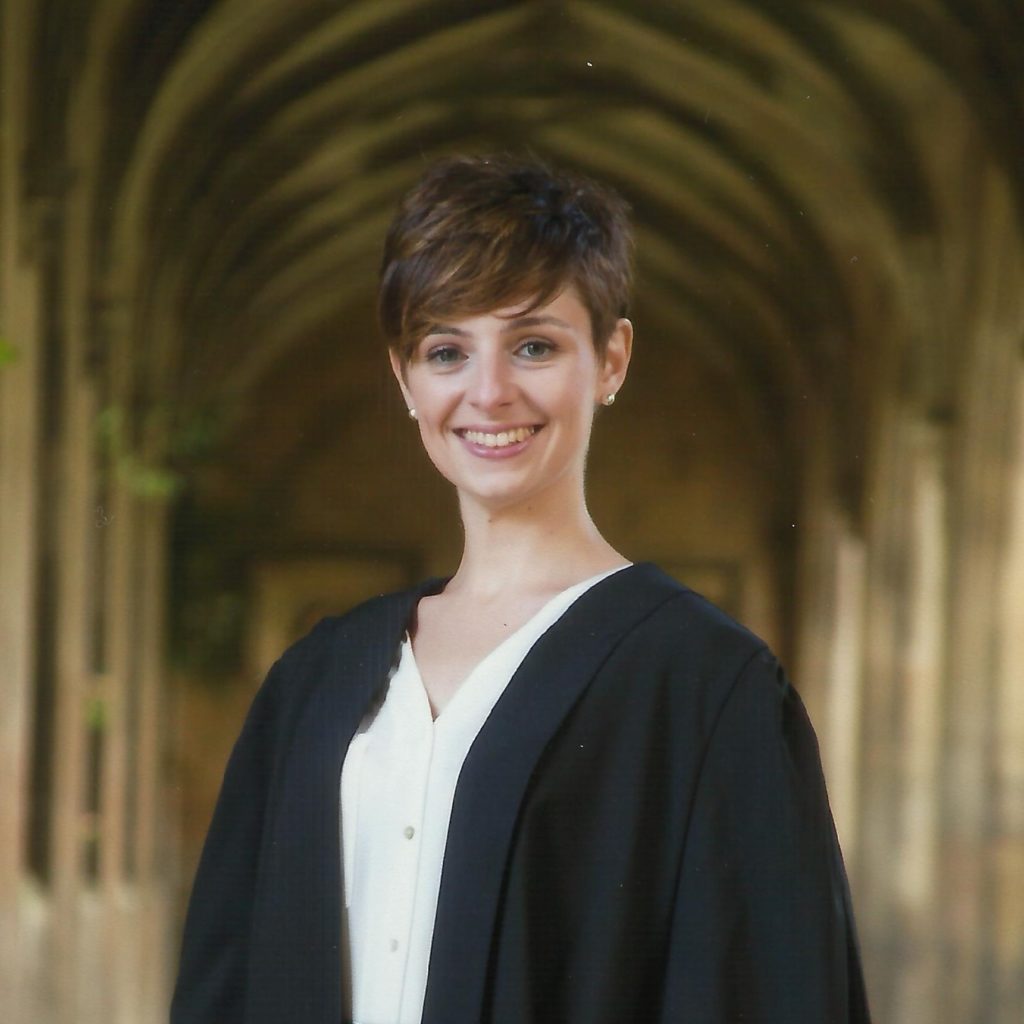
Dr. Ana Llorens
Partners
